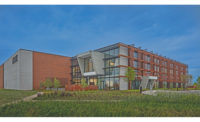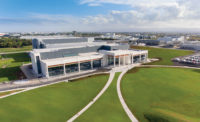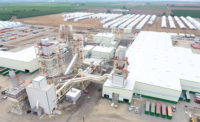Keeping contamination at bay was nearly as crucial during the construction of this Saudi Arabian superabsorbent-polymers (SAP) plant as it is now during production of the plant's end product: material used to make diapers and disposable hygiene products.
"Because the product is FDA-approved and goes into baby diapers, the hygiene standards are very high," says Bernd de Jonge, project director at Fluor. Such standards meant the team had to go above the norm in keeping the site clean. "The project had to have a full-blown cleanliness program in place until the building was fully closed with [running] HVAC units [that had] a slight overpressure to ensure that no dust and foreign matter would enter and possibly contaminate the hygiene product," de Jonge says. That mind-set continued throughout the project and near the end, when the integrated project team's senior members, including managers of the complex and client operations, held a "cleanliness afternoon" to do a "white glove" inspection of the premises.
Fluor was the engineering, procurement and construction contractor building the six-floor, 250,000-sq-ft plant, which is the first of its kind in the region. Supplying the Mideast marketplace, the plant will source raw materials from the Tasnee petrochemical complex it sits within and another nearby facility.
The roughly 500-ft-high structure was designed to hold heavy equipment, including two pieces that weigh 65 tons each. Using 23-ft-wide, 40-ft-long and 40-ft-high modular structural steel, the team worked in a nearby staging area to assemble steel "boxes," or frames, each weighing 23 metric tons. The boxes were then lifted 100 ft in the air and placed onto the superstructure.
The lump-sum turnkey project required a "vertical attitude" to build as there were about 500 pieces of equipment, 40 of which that needed to be installed as the structural steel was going up, de Jonge says. Out-of-sequence engineering was needed because the building was "split up into six sections, or phases, that had to be designed to the fullest extent," with features that included mechanical, piping, electrical and instrumentation engineering. The steel was issued, fabricated and installed as per the schedule of the various phases. To help ensure flexibility and a high level of control of the materials supply, the team partnered with an independent structural-steel supplier, main instrumentation vendor, main automation vendor, main electrical vendor and piping materials supplier.
"The meticulous planning of the installation of the modular structural steel, together with the equipment, in a well-sequenced, floor-by-floor fashion was key to the success of the project," de Jonge says.
Clear communication among the integrated global team was vital, and all engineers were encouraged to contribute to design solutions and reviews. Individual project team workers were eligible for award certificates or monetary prizes based on their contribution to factors including the project's cost, schedule and health and safety.
"This is not a typical building. It is a specialty chemicals plant with numerous pieces of interconnecting equipment and piping as well as instrumentation," de Jonge says. Even so, he adds, it was delivered on time and within budget.
Owner Saudi Acrylic Polymers Co., a joint venture of Evonik Industries, Essen, Germany; and Saudi Acrylic Acid Co., a joint venture of Saudi firms Tasnee and Sahara Petrochemicals
EPC, Managing Contractor and Lead Design Fluor’s offices in Haarlem, the Netherlands; the Phillippines; and Saudi Arabia
General Contractor Nasser Al-Hajri Corp., Dhahran; and KAMCO, Dammam








Post a comment to this article
Report Abusive Comment